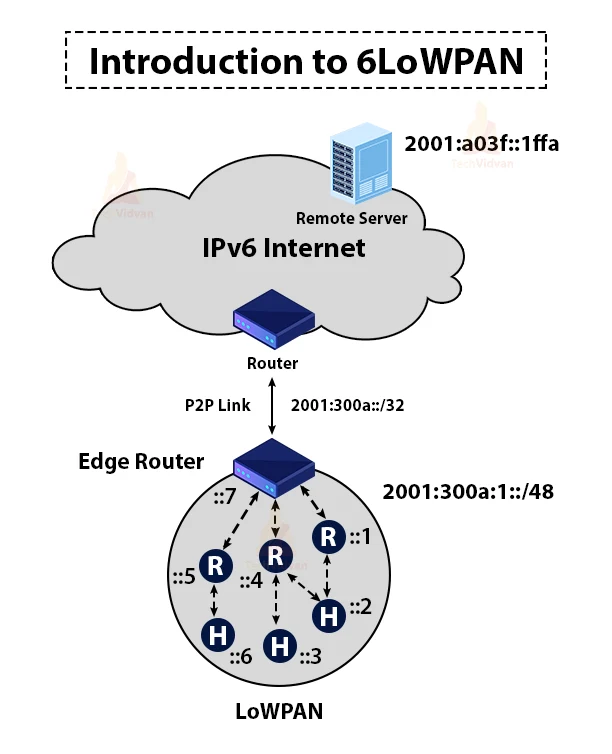IoT Network Layer Protocols
The network layer in iot is mainly divided into two parts. The routing layer sends packages from origin to destination and the encapsulation layer is largely responsible for creating packets. Let us learn about IoT Network Layer Protocols.
IoT Network Layer Protocols
1. RPL
RPL is a routing protocol for low-power and lossy networks. Low power and loss networks are resource-constrained networks meaning based on the available resources the networks adapt themselves. Routers are usually limited in terms of processing power, battery, and memory, and their interconnects are characterized by unstable links with huge loss rates, low data rates and low packet delivery rates.
RPL is a distance routing protocol. RPL mainly targets collection-based networks, where nodes periodically send measurements to a collection point. The design of the protocol was to be highly adaptive to network conditions and to provide alternate routes, whenever default routes are inaccessible. RPL provides a mechanism to disseminate information over the dynamically formed network topology. RPL can handle thousands of nodes.
2. CORPL
CORPL or cognitive RPL is an extension of the RPL protocol. Cognitive networks and DODAG topology use this network design protocol. CORPL in addition makes two new updates to the previously existing RPL protocol.
It makes use of opportunistic forwarding to transfer packages between each module or nodes. Rather than only the parents maintaining the information each node also remembers the information of the forwarding set. Each node makes use of DIO messages to update its neighbours.
3. CARP
Caching Array Routing Protocol also known as CARP is a protocol developed by Microsoft and implemented in the Microsoft Proxy server. It allows multiple proxy servers to array as a single logical cache for distributed content caching. We implement CARP as a series of Algorithms that we apply on top of HyperText Transfer Protocol(HTTP). CARP allows a web browser or downstream proxy server to determine exactly where in the proxy array we store the information for a requested uniform resource.
CARP enables tracking proxy servers through an array membership list that is automatically updated using a time to live countdown function. This function regularly checks for active proxy servers in the array. CARP uses hash functions and combines the hash values of each requested URL with each proxy server.
4. 6LoWPAN

6lowpan connects things to the cloud. Low power, IP-driven nodes and mesh network support makes this technology a great support in the internet of things. 6lowpan is an acronym for IPv6 over Low Power Wireless Personal Area Network. It is a low-power wireless mesh network where every node has its IPv6 address allowing it to connect directly to the internet. Internet packets can be carried efficiently within small link-layer frames.
6lowpan should be used with low-power networks with memory-constrained embedded devices. A 6lowpan system is formally made of many low-power nodes in a self-healing mesh form. This allows free exchange of data with the help of an edge router that acts as a simple gateway for the rest of the internet. Applications running on the nodes pass IP packets to the servers on the internet without thinking about the edge router.
6LoWPAN Security measure
System security and device security is one of the major worries about the 6LoWPAN protocol. Attacks on the security state of 6LoWPAN could cause a major destruction in the direct network of the protocol. We obtain 6LoWPAN by combining two systems so there is a chance that the system gets attacked from both sides. These attacks target the 6LoWPAN stack.
Properties of 6LoWPAN
- Nano IP
- IPv6 over low power wireless personal area network
- Developed by the IETF(Internet engineering task force)
Conclusion
So that was it about the IoT network layer protocols. We look into the popular and beneficial protocols such as the RPL, CORPL, CARP and the 6LoWPAN. We hope our explanation was easy to understand.
